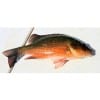 By Ed Snyder/Outdoors
By Ed Snyder/Outdoors
Rollover Pass, Gilchrist, TX.
Recently, good runs of snapper in Rollover Pass have puzzled and surprised many anglers. Once, these fish have tallied but a few per year. But now have shown up by the dozens in anglers coolers. These were first identified as Vermillion Snapper due to their bright red and black colorations. But, also recently, I was informed by TPWD (Texas Parks & Wildlife) that these were not Vermillion Snapper but Grey, or Mangrove Snapper.
Due to most anglers not really knowing what these fish were, they were cutting them up for bait or throwing them back. This is a big mistake on their part as these chunky red and black critters are very edible, and in fact, a rare delicacy on most seafood menus. They have a sweet, white flaky flesh comparable to that of the highly prized Red Snapper in the Gulf.
Normally you have to charter a fishing boat, spending hours on rock and roll in the Gulf to catch snapper. But no expensive charter or rock and rolling queasiness here, as all you have to do is just drive on down and fish for them FREE at Rollover Pass! Compliments of the Gilchrist Community Association.
From Wikipedia Encyclopedia
Mangrove Snapper, Lutjanus griseus, is a snapper in the family Lutjanidae. It is also known as the gray snapper, mango snapper, or cabellerote.
Its color is typically greyish red, but it can change color from bright red to copper red. Its size ranges from 2–6 pounds, but many biologists have now confirmed that a 29.5 pound mangrove snapper was speared off the Florida coast.
Mangrove snapper can be confused with the cubera snapper, black snapper Lutjanus cyanopterus. Mangrove snappers are typically much smaller than cubera, but when they are of similar size, the two species can only be distinguished by examining a patch of teeth (tooth patch) on the inside roof of the mouth. Many specimens caught in Florida, specifically Punta Gorda, are actually misidentified Dogtooth Snapper, a.k.a. Dog Snapper Lutjanus jocu. The best way to distinguish between the two species is that the Dogtooth Snapper has a lighter triangle of color with a blue band under the eye and large, sharp fangs in the front (canines), hence its common name. These fangs can deliver a painful bite. The mangrove snapper feeds mostly on small fishes and crustaceans.
The mangrove is one of, if not the most common species of snapper in warmer regions and is found in many areas from canals to grass flats as well as in open water. Most mangrove snapper in the open water are generally found near bottom structure or reefs. Mangrove snapper is a common target for anglers; and is highly prized for its light and flaky meat. Mangrove snapper can be caught on a variety of baits, but is typically caught with live or frozen shrimp, squid, minnows and occasionally on artificial lures or baits. Mangroves can be spear-fished as well, but are sometimes a tough target as they tend to be more wary of divers, rather than curious. Mangroves are typically wary, and the wariness of mangroves to eat baits tends to increase as the fish grow larger. Most mangrove snapper are caught on light to medium tackle, and typical catches range from eight inches to fourteen inches in shallow or in-shore waters, to up to 20″ in deeper waters. Larger fish are uncommon, but not rare.Vermillion Snapper: Similar in appearance to their larger cousin, the red snapper, vermilion snapper is the most frequently caught along the southeastern United States. The commercial and recreational fisheries for this species are managed in both the South Atlantic and Gulf of Mexico through size limits, bag limits, and catch quotas. Managers have set strict annual catch limits for these fish at a level intended to prevent over-fishing. In the South Atlantic and Gulf of Mexico, when the commercial annual catch limit is reached, the vermilion snapper fishery is closed for the rest of the year, protecting the species from over-harvest. There are similar accountability measures for the recreational fishery. Managers also recently implemented annual catch limits and accountability measures for the Caribbean snapper group, which includes vermilion snapper.
As far as this writer/angler knows the Mangrove, or Grey Snapper, has an 8 inch size limit with no creel limits attached. These fish are very unusual catches at the pass, having some anglers scratching their heads as what to do with them. Well, in my judgment after spending a couple of fishing years in Florida catching Mangroves inshore as well as offshore on the grouper banks, I say EAT THEM!
They can be caught on the bayside of Rollover fishing with mud minnows or dead shrimp along the bulkheads. They are a REALLY GREAT eating fish and a true delicacy for your seafood appetite!
This Info article is sponsored by Miss Nancy’s Bait Camp and CrystalBeachLocalNews.com. Call for more info at 484-560-9323, or for daily updates and fishing photos click to…FaceBook/Missnancysbaitcamp.

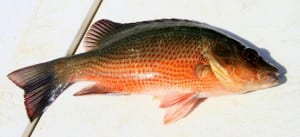
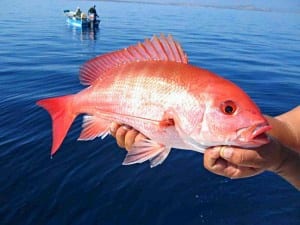
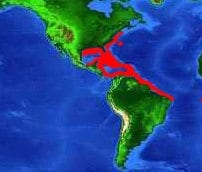
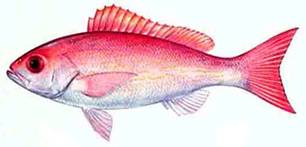
 Posted in
Posted in 
























